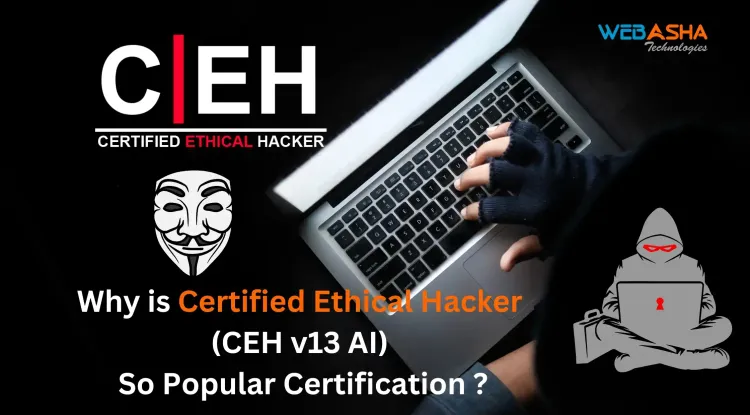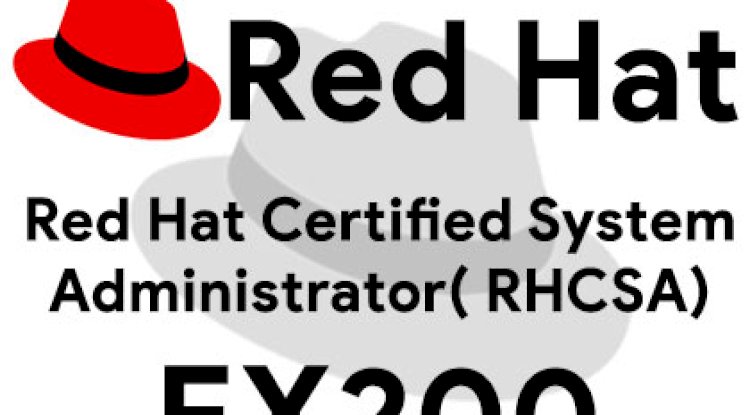How to Build a Strong Cybersecurity Portfolio Without Experience | A Step-by-Step Guide for Beginners
Building a cybersecurity portfolio without experience is possible by showcasing practical skills, personal projects, and certifications. A well-structured portfolio highlights hands-on experience, problem-solving abilities, and security knowledge, making you stand out to potential employers. To create an impactful cybersecurity portfolio, start by learning the fundamentals of cybersecurity through free courses and certifications. Set up a home cybersecurity lab, work on open-source security projects, participate in Capture The Flag (CTF) competitions, and document your work through blogs, GitHub, or a personal website. Contributing to bug bounty programs, writing research papers, and sharing knowledge via YouTube or LinkedIn further strengthens your portfolio. By following these strategies and continuously improving your skills, you can successfully enter the cybersecurity field, even without formal work experience.

Table of Contents
- Introduction
- Why a Cybersecurity Portfolio is Important?
- How to Build a Cybersecurity Portfolio Without Experience?
- Best Platforms to Showcase Your Cybersecurity Portfolio
- Conclusion
- FAQs
Introduction
Breaking into the field of cybersecurity without prior experience can seem challenging, but creating a strong cybersecurity portfolio can significantly boost your chances of landing a job. A well-crafted portfolio showcases your skills, knowledge, and hands-on experience, even if you don’t have a formal cybersecurity job.
In this blog, we’ll cover:
- Why a cybersecurity portfolio is important
- How to build one without professional experience
- The key elements your portfolio should include
- Best platforms to showcase your work
- Tips for making your portfolio stand out
By following these steps, you can develop a strong cybersecurity portfolio that highlights your potential to employers.
Why a Cybersecurity Portfolio is Important?
In the highly competitive cybersecurity industry, a portfolio serves as proof of your skills, making you stand out from other candidates. Employers look for practical experience and problem-solving abilities, and a well-structured portfolio demonstrates your knowledge even if you haven't worked in cybersecurity before.
Benefits of a Cybersecurity Portfolio:
- Showcases your technical skills (network security, penetration testing, vulnerability assessment)
- Demonstrates hands-on experience through projects, labs, and case studies
- Builds credibility when applying for entry-level cybersecurity jobs
- Helps in interviews by providing tangible examples of your work
- Boosts your online presence when shared on LinkedIn, GitHub, or a personal website
Even without experience, you can build a solid cybersecurity portfolio by working on real-world projects, certifications, and self-learning.
How to Build a Cybersecurity Portfolio Without Experience?
1. Learn Cybersecurity Fundamentals
Before building your portfolio, develop a strong foundation in cybersecurity concepts such as:
- Network Security – Firewalls, IDS/IPS, VPNs
- Ethical Hacking & Penetration Testing – Kali Linux, Metasploit, Burp Suite
- Incident Response & Threat Analysis – SIEM tools, log analysis
- Web Application Security – OWASP Top 10 vulnerabilities
- Cryptography & Secure Coding
Where to Learn:
- Free platforms like Cybrary, TryHackMe, Hack The Box, and Coursera
- WebAsha Technologies' structured cybersecurity training programs
2. Set Up a Home Cybersecurity Lab
Hands-on practice is essential. You can set up a virtual lab environment on your computer using:
- VirtualBox or VMware to create virtual machines
- Kali Linux for penetration testing
- Metasploitable for vulnerability assessment
- Splunk & Wireshark for log analysis
A home lab demonstrates practical knowledge of cybersecurity tools, a crucial component of your portfolio.
3. Work on Personal Cybersecurity Projects
Projects help demonstrate your expertise. Some ideas include:
- Create a simulated cyber attack and document how you mitigated it
- Perform vulnerability analysis on a test web application
- Conduct a security audit of your personal website
- Write a research paper on cybersecurity trends or case studies
Document your projects with detailed reports, screenshots, and step-by-step solutions.
4. Earn Cybersecurity Certifications
Certifications validate your skills. Even entry-level certifications like:
- CompTIA Security+ (Foundational cybersecurity knowledge)
- Certified Ethical Hacker (CEH) (Offensive security & penetration testing)
- Cisco CyberOps Associate (Security operations center analyst skills)
- GIAC Security Essentials (GSEC) (Cyber defense techniques)
Having certifications enhances your portfolio and makes you more employable.
5. Contribute to Open Source Security Projects
Many open-source security projects need contributors. By participating in GitHub projects, you can:
- Gain real-world experience
- Work with cybersecurity professionals
- Enhance your problem-solving skills
Some projects to explore:
- OWASP (Open Web Application Security Project)
- Metasploit Framework
- Snort (Intrusion Detection System)
6. Start a Cybersecurity Blog or YouTube Channel
Sharing knowledge proves your expertise and communication skills. You can:
- Write blogs on cybersecurity topics, tutorials, or case studies
- Create YouTube videos demonstrating ethical hacking techniques
- Document your learning journey in cybersecurity
WebAsha Technologies' blog section is an excellent example of how professionals share cybersecurity knowledge.
7. Participate in Cybersecurity Challenges
Online platforms provide real-world cybersecurity challenges where you can test your skills:
- Capture The Flag (CTF) challenges on TryHackMe and Hack The Box
- Bug bounty programs on HackerOne and Bugcrowd
- Cybersecurity competitions like National Cyber League (NCL)
Winning or ranking well in these challenges adds credibility to your portfolio.
8. Build a Personal Website to Showcase Your Portfolio
Your portfolio should be easily accessible to potential employers. You can:
- Create a personal website with your projects, certifications, and blogs
- Use GitHub or LinkedIn to display your work
- Make a PDF portfolio with case studies and research papers
Your portfolio should highlight:
- Technical projects & tools used
- Certifications & training completed
- Blog posts & CTF participation
- Contributions to open-source projects
Best Platforms to Showcase Your Cybersecurity Portfolio
| Platform | Purpose |
|---|---|
| GitHub | Host cybersecurity scripts, penetration testing tools |
| Display certifications, projects, and blogs | |
| TryHackMe | Showcase CTF badges and completed challenges |
| HackerOne/Bugcrowd | Bug bounty reports and findings |
| Personal Website | Create an online resume with case studies |
A well-organized portfolio increases your chances of getting noticed by employers.
Conclusion
Building a cybersecurity portfolio without experience is achievable with consistent learning, practical projects, and hands-on engagement. Even if you don’t have a professional background in cybersecurity, you can prove your expertise through labs, certifications, open-source contributions, and CTF challenges.
WebAsha Technologies offers structured cybersecurity training programs to help beginners gain the necessary skills and build a strong portfolio that attracts recruiters. With dedication and effort, you can land a cybersecurity job even without prior experience.
Start building your cybersecurity portfolio today and open doors to exciting career opportunities!
FAQs
What is a cybersecurity portfolio?
A cybersecurity portfolio is a collection of projects, certifications, research, and other practical work that showcases your cybersecurity skills and experience to potential employers.
Why is a cybersecurity portfolio important for beginners?
A portfolio helps beginners demonstrate their hands-on skills and problem-solving abilities, making them more attractive to employers despite a lack of formal work experience.
Can I build a cybersecurity portfolio without experience?
Yes, you can build a cybersecurity portfolio by working on personal projects, setting up a home lab, participating in CTF challenges, and obtaining cybersecurity certifications.
What are the key elements of a cybersecurity portfolio?
A strong cybersecurity portfolio includes certifications, hands-on projects, research papers, bug bounty reports, GitHub contributions, and blog posts on cybersecurity topics.
How do I start building a cybersecurity portfolio?
Begin by learning cybersecurity fundamentals, setting up a home lab, practicing ethical hacking, and documenting your projects on platforms like GitHub or LinkedIn.
What cybersecurity skills should I highlight in my portfolio?
Key skills include penetration testing, network security, web application security, incident response, vulnerability assessment, and ethical hacking.
What certifications should I include in my cybersecurity portfolio?
Entry-level certifications like CompTIA Security+, CEH (Certified Ethical Hacker), Cisco CyberOps Associate, and GIAC Security Essentials (GSEC) help validate your skills.
How can a home cybersecurity lab help in portfolio building?
A home lab allows you to practice cybersecurity tools like Kali Linux, Wireshark, Metasploit, and SIEM systems, helping you gain hands-on experience.
What personal cybersecurity projects can I include in my portfolio?
You can perform penetration testing on test websites, analyze malware, conduct security audits, and create network security policies.
How do I showcase my cybersecurity projects?
Upload projects to GitHub, create a personal website, write detailed case studies, and share your findings on LinkedIn to make your portfolio more accessible.
Can writing a cybersecurity blog improve my portfolio?
Yes, blogging about cybersecurity topics and tutorials demonstrates your understanding and ability to explain complex security concepts.
How do Capture The Flag (CTF) challenges help in building a portfolio?
CTFs test your cybersecurity skills in real-world scenarios. Completing challenges on TryHackMe, Hack The Box, and CTFtime adds credibility to your portfolio.
What are bug bounty programs, and should I participate?
Bug bounty programs allow you to find security vulnerabilities in applications. Platforms like HackerOne and Bugcrowd reward ethical hackers and provide real-world experience.
Should I contribute to open-source security projects?
Yes, contributing to OWASP, Metasploit, or Snort projects helps build practical experience and credibility in the cybersecurity community.
How can I create a personal website for my cybersecurity portfolio?
Use platforms like WordPress, GitHub Pages, or Wix to build a website showcasing your projects, blogs, and certifications.
What role do research papers and case studies play in a cybersecurity portfolio?
Writing cybersecurity research papers and case studies proves your analytical and problem-solving skills to employers.
How do I document my cybersecurity learning journey?
Maintain a cybersecurity journal or blog where you document hands-on practice, CTF solutions, and project walkthroughs.
Can YouTube or LinkedIn be used to showcase cybersecurity knowledge?
Yes, creating cybersecurity tutorials on YouTube or posting insights on LinkedIn can help establish your expertise.
How can cybersecurity networking help build my portfolio?
Joining cybersecurity communities, attending conferences, and connecting with professionals can open doors to mentorship and job opportunities.
How important is GitHub for a cybersecurity portfolio?
GitHub is essential for hosting cybersecurity scripts, automation tools, and penetration testing projects, making your work easily accessible to recruiters.
Should I include soft skills in my cybersecurity portfolio?
Yes, skills like communication, teamwork, problem-solving, and critical thinking are crucial in cybersecurity roles.
How can I demonstrate my penetration testing skills in my portfolio?
Document penetration testing reports, include tool usage (like Nmap, Burp Suite, and Metasploit), and explain vulnerabilities you discovered in test environments.
Do cybersecurity recruiters check portfolios?
Yes, many recruiters look at GitHub, LinkedIn, and personal websites to evaluate a candidate’s skills beyond their resume.
Should I list cybersecurity-related volunteer work in my portfolio?
Yes, volunteering in cybersecurity awareness programs or security audits for small businesses adds value to your portfolio.
Can online courses be added to my cybersecurity portfolio?
Yes, completing courses from WebAsha Technologies, Coursera, Udemy, or Cybrary can demonstrate your commitment to learning cybersecurity.
How do I showcase my cybersecurity certifications effectively?
Create a certifications section on your portfolio website or LinkedIn and upload digital badges from certification providers.
What are some beginner-friendly cybersecurity projects?
Projects like password strength testing, setting up a secure web server, malware analysis, and log file analysis are great for beginners.
How long does it take to build a strong cybersecurity portfolio?
With dedicated effort, you can create a compelling portfolio within 3 to 6 months by working on projects, obtaining certifications, and participating in cybersecurity challenges.
How can WebAsha Technologies help in building a cybersecurity portfolio?
WebAsha Technologies offers industry-recognized cybersecurity training, hands-on labs, mentorship, and career guidance to help beginners build a strong cybersecurity portfolio.












![Top 10 Ethical Hackers in the World [2025]](https://www.webasha.com/blog/uploads/images/202408/image_100x75_66c2f983c207b.webp)

![[2025] Top 100+ VAPT Interview Questions and Answers](https://www.webasha.com/blog/uploads/images/image_100x75_6512b1e4b64f7.jpg)









